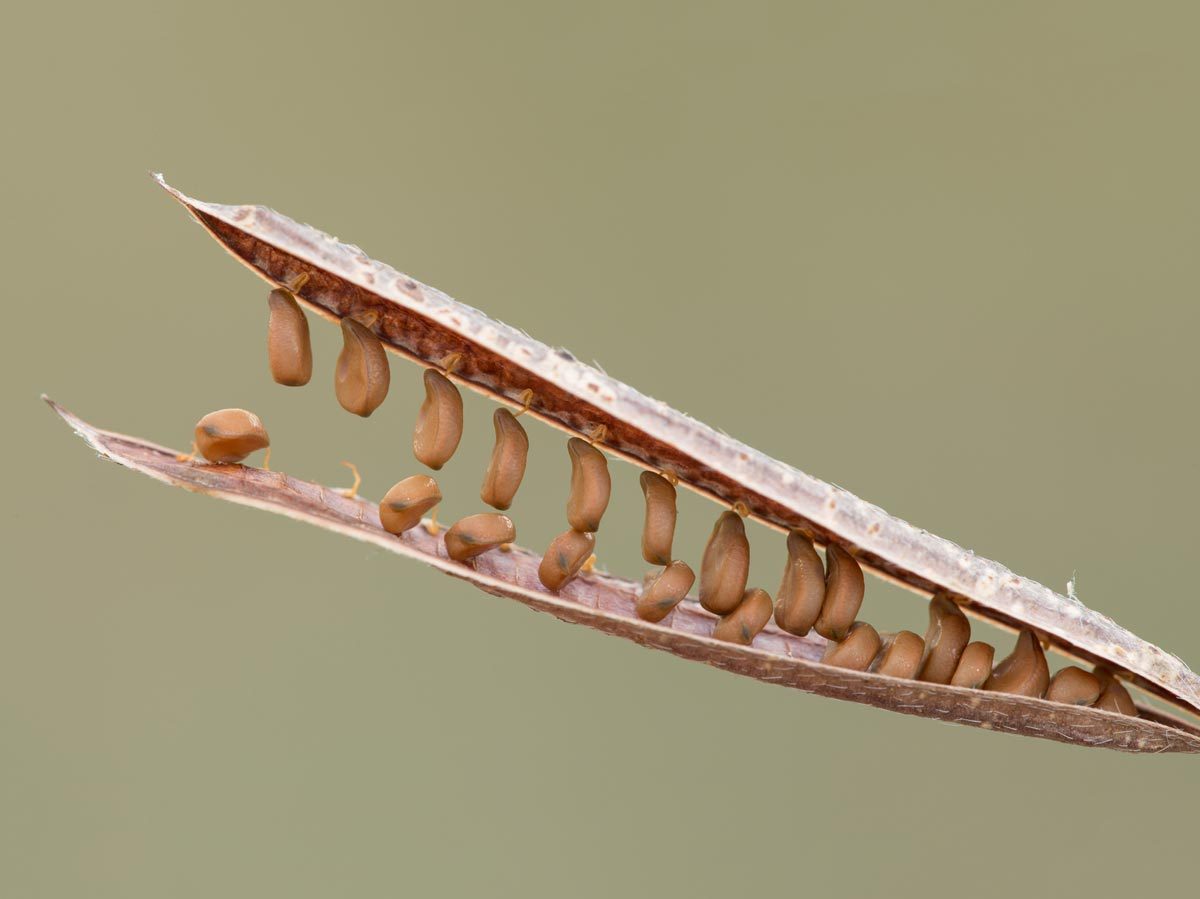Collecting Seeds Across Texas

A Lindheimer’s senna (Senna lindheimeriana) seed pod. PHOTO Wildflower Center
ASK SEAN WATSON AND PHILLIP SCHULZE how they spent their summer, and they will tell you they journeyed almost 3,000 miles in a pickup truck, visited some of the most botanically diverse parts of Texas and collected 100 species of seeds and plants for the Lady Bird Johnson Wildflower Center.
Nursery manager Watson and land steward Schulze spent six days working near the Rio Grande from Boca Chica to Laredo, followed by a seven-day trip to West Texas.
The collection will introduce some new species to South and West Texas themed display beds at the Wildflower Center. Some of the species may eventually be available for plant sales. However, first the horticulture staff must determine if the plants are adapted to local environmental conditions.
The South Texas region the team visited has been an area of environmental concern due to its sensitive wildlife corridors and has been of greater concern since federal plans were announced to build a fence along parts of the U.S.-Mexico border. The Lower Rio Grande Valley National Wildlife Refuge system (LRGVNWR) has been acquiring land to compliment an existing wildlife corridor and lands managed by Texas Parks and Wildlife. The fence would cut through areas that act as corridors for endangered or threatened species, causing habitat destruction and could potentially cut off water supplies to wildlife and plants.
Collecting areas included Santa Ana National Wildlife Refuge, many LRGVNWR tracts, The Nature Conservancy’s Chihuahua Woods Preserve, Sabal Palm Audubon Center and Sanctuary, and along roadsides with permission from the Texas Department of Transportation.
“It’s the first seed collection I’ve done on this scale,” Watson said. “I think it opens the door to relationships and to future seed collecting trips. We were also able to collect more species and have a more productive trip with guidance from the contacts we made.
“We had access to so many places and the opportunity to learn the history of the places and plants,” he added.
For example, Sabal mexicana (Texas Palm or Mexican Palm) is a native palm that used to be more widespread. Coyotes and other animals spread its seeds. It was cut down and used as pilings along the river for piers. Because of overuse the larger older palms are now limited to the Sabal Palm Sanctuary. However, populations are beginning to regenerate on some of the U.S. Fish and Wildlife tracts along the river due to wildlife dispersing seed.
“During the West Texas trip, we visited the Chihuahua Desert Research Institute and spoke with Marc Goff, the cactus growing guru who manages their greenhouse,” Watson said. “He gave us many species of cactus seedlings and seed that we could not have found in the limited time we had. We also collected some species onsite like the Emory oak that we can plant in our future Arboretum project at the Wildflower Center.
“The cool thing about the institute is that it is a botanical garden in the middle of the desert. They are trying to raise people’s awareness of native desert species and even have many Mexican species on display,” he added.
In West Texas, the team collected at Independence Creek and the Davis Mountain’s Livermore Preserve-both Nature Conservancy properties. They also collected on the Cibolo Creek Ranch Resort, private land in the Chinati Mountains near Marfa. The ranch is comprised of three restored forts that are now vacation destinations.
“The ranch is working on increasing the diversity of native flora and fauna by seeding out with native grasses and other native plant species, and managing its land for native wildlife like the Montezuma quail,” Watson said. “They are trying to save the biological integrity of this region. If they can show how unique this part of West Texas is, it may help them ward off a proposed super highway that would split the ranch. It would go from Mexico up Hwy 67 all the way to Canada. Known as La Entrada, many landowners in the area are fighting it. The landscape is so isolated and pristine and they want to keep it that way.”
Throughout their journey, the team was amazed at and appreciative of the diversity offered by each region.
“It would take decades-probably longer-to compile an annotated list of all of the vascular plant species in West Texas,” Watson said. “Often each canyon had its own set of unique species that you may not find in the canyon just around the bend. There are just so many niches and protected areas in the mountains. The fact that West Texas is so sparsely populated and still relatively undeveloped has allowed this diversity to continue. You can still find many areas of overgrazed land, but man’s footprint does not go too far beyond that.
“There is no urban sprawl, no big cities besides El Paso, and not as much habitat destruction because of the lack of people. Water is limited and the environment is harsh,” he added. “This has probably been the land’s saving grace.”

